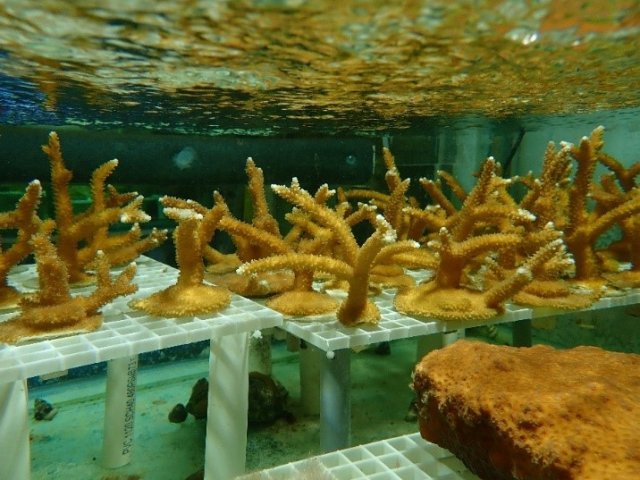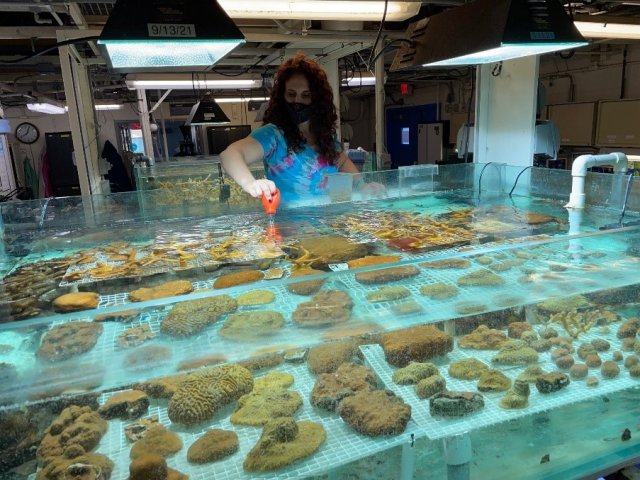Down by the Seashore: EPA Corals Lab Helps Protect Coral Reefs
Published August 29, 2022

The Florida coast is a popular vacation destination for its beautiful white sand beaches, crystal clear water, and easy access to water sports. Many visitors don’t think about the teeming diversity of the coral reefs lying just off the shore in some areas. These reefs, sometimes called “rainforests of the sea,” are an important part of the ecosystem. They buffer shorelines from weather events, provide habitat for fish and other marine species, and provide food, jobs, and a variety of economic benefits to people.
However, coral reefs are declining at alarming rates from both natural and human-made threats such as dredging, plastic pollution, higher ocean temperatures, and changing ocean chemistry. That’s where the EPA Corals Lab in Gulf Breeze, Fla. comes into the picture.
At Gulf Breeze -the only EPA lab for corals research- scientists use their location and a state-of-the art laboratory to address some of the pressing issues affecting coral reefs. According to coral scientist Cheryl Hankins, “The primary goal of our research is to provide data for better management of coral reefs. Working in a coral laboratory allows you to observe coral colonies daily so that you can interpret behavioral and physical attributes that are indicators of health.”
Water from the Gulf of Mexico allows scientists to study stressors to both Atlantic/Caribbean and Pacific corals. All of the corals used in the lab are rescued from coastal areas before they could be impacted during projects such as dredging. Scientists maintain and grow corals in their culture systems for facility research. During experiments, scientists can precisely control many different environmental parameters –including temperature, salinity, light, and other unexpected variations in water quality – allowing the scientists to isolate specific stressors for research.

Microplastics
EPA scientists recently used their indoor wet lab, the Coral Research Facility, to study how microplastics impact two species of coral. Microplastics are extremely small pieces of plastic created from the breakdown of larger plastic items, such as water bottles. These tiny plastic fragments can be ingested by animals, including corals. Hard corals, called scleractinia, build a calcium-based skeleton for protection. One study looked at what size microplastics are ingested by scleractinian coral, if they have any impact on the skeleton or other growth, and how long the plastic stays in the coral’s digestive tract. Their research found that long-term exposure to microplastics impaired coral growth.

Dredging
EPA researchers are also using the wet lab to study how sedimentation and ocean acidification affect corals. Recent coral losses are linked to dredging activities, which creates clouds of suspended sediment in the water. A current study examines, in a laboratory setting, the effects of fine-grain sediments on selected Florida coral species. Scientists are observing the effects on coral survival, measuring growth and calcification, and documenting sediment characteristics.
Upcoming research includes an investigation into the additional impacts of higher temperatures and a grant to look at chitosan, a substance in crustacean shells that can cause particles to clump together, to see if it has any negative impacts to coral.
Future Impact
Increasing understanding about how coral reacts in different situations will help guide coral protection, hopefully making them less susceptible to global environmental threats. The knowledge gathered through these studies can be used for potential water quality standard development for US States and Territories, and the better management of coral reefs worldwide.
Learn More
Research: Microplastic ingestion by coral as a function of the interaction between calyx and microplastic size.
